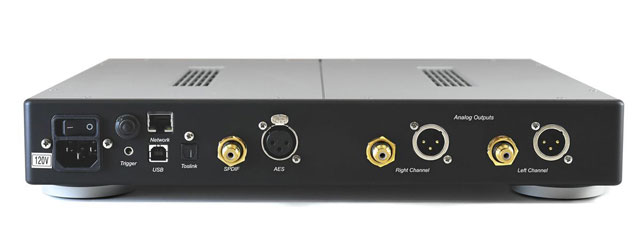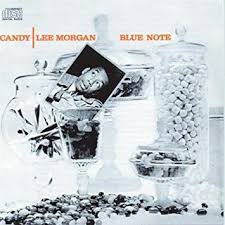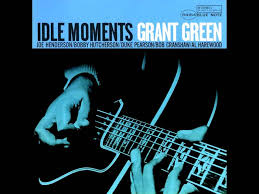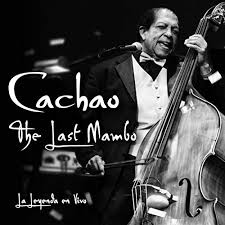Bricasti Design M3 DAC by Terry London

 For the last ten years, I have had more than five non-oversampling (NOS) R2R (Resistor ladder) multi-bit DACs, with tube-based digital-to-analog sections, as my digital reference in my main system. Over that time span, I had in-house some of the most highly regarded, regardless of price, Delta-Sigma oversampling DACs to explore their performance in my system. I exclusively drove all these DACs with reference level CD transports and did not stream music. I have over 10,000 CDs; therefore, I am only concerned with the performance of PCM (44.1k Redbook) as source material. Important to keep in mind is that R2R NOS DACs or Delta-Sigma DACs are not inherently superior to each other. Like all things in the great hobby of high-end audio, personal taste and subjective preferences must always be taken into account. As my readers know, the most important aspect of the reproduction of the “illusion” of music for me is timbre, color, and tonality. If this aspect of the music is even slightly washed out or has a dry tonal balance, it is a deal breaker for me as far as being able to relax and connect with the music. The second most important priority for me would fit into the category of what I refer to as the individual spatial representation of notes and harmonics. If a system is mainly presenting with razor sharp hyper precision the leading edge of a note this tends to, unfortunately, flatten/thin out the body of the harmonic. I find this to be “lean” and thinning out the image to the extent that it robs the “image density/meat on the bones,” palpability of individual instruments when heard performing in real time in-vivo. Because of these personal listening priorities, I had never auditioned a Delta-Sigma solid-sate designed DAC in my system that I would want for a long-term reference. While I admired their reproduction of micro-details, thunderous overall dynamics, and crystal-clear transparency, they sounded somewhat mechanical and analytical. They lacked the rich/organic tonality and image palpability which I need to relax and to be able to enjoy the music.
For the last ten years, I have had more than five non-oversampling (NOS) R2R (Resistor ladder) multi-bit DACs, with tube-based digital-to-analog sections, as my digital reference in my main system. Over that time span, I had in-house some of the most highly regarded, regardless of price, Delta-Sigma oversampling DACs to explore their performance in my system. I exclusively drove all these DACs with reference level CD transports and did not stream music. I have over 10,000 CDs; therefore, I am only concerned with the performance of PCM (44.1k Redbook) as source material. Important to keep in mind is that R2R NOS DACs or Delta-Sigma DACs are not inherently superior to each other. Like all things in the great hobby of high-end audio, personal taste and subjective preferences must always be taken into account. As my readers know, the most important aspect of the reproduction of the “illusion” of music for me is timbre, color, and tonality. If this aspect of the music is even slightly washed out or has a dry tonal balance, it is a deal breaker for me as far as being able to relax and connect with the music. The second most important priority for me would fit into the category of what I refer to as the individual spatial representation of notes and harmonics. If a system is mainly presenting with razor sharp hyper precision the leading edge of a note this tends to, unfortunately, flatten/thin out the body of the harmonic. I find this to be “lean” and thinning out the image to the extent that it robs the “image density/meat on the bones,” palpability of individual instruments when heard performing in real time in-vivo. Because of these personal listening priorities, I had never auditioned a Delta-Sigma solid-sate designed DAC in my system that I would want for a long-term reference. While I admired their reproduction of micro-details, thunderous overall dynamics, and crystal-clear transparency, they sounded somewhat mechanical and analytical. They lacked the rich/organic tonality and image palpability which I need to relax and to be able to enjoy the music.
In April of 2019 I had the pleasure of reviewing the Bricasti Design stereo M15 amplifier. It was a terrific performer and the engineering and build quality would take many marquee manufacturer’s amplifiers to the mat, based on their build quality/performance-to-price ratio. Bricasti Design is one of the highest regarded builders of amplifiers, preamplifiers, and DACs used in the professional recording industry. The brand is also esteemed in the Asian market. They take their stereo equipment very seriously and have won many major awards in their publications that review high-end equipment. The M15 amplifier review had been setup by Mike Kay of Audio Archon, a Bricasti Design retailer, and during this process I had developed an excellent working relationship with Brian Zolner, co-founder/chief designer and Damon Gramont, director of sales and marketing at Bricasti Design. Both trusted that I would be able to write an informative review and honestly represent their product and state the facts of my listening experience, good, bad or indifferent.



Well, these “three amigos” wanted me to evaluate the subject of this review, the latest version of the Bracasti Design M3 DAC, which retails for $4,995, for the standard model. If you add an internal streamer, the upcharge is $1000, a headphone amplifier is $500, and finally, a remote control that controls all DAC functions is $500. The M3 DAC chassis is milled out of a billet of anodized aluminum. The front of the M3 is slate black, while the top of the chassis is silver. The dimensions of the M3 are 14 inches width, 11.25 inches depth, and2.5 inches in height. The DAC weighs 10 pounds. On the front of the M3 you will find a large, easy-to-read LED screen showing all DAC functions, a volume control, and six push buttons that control all DAC functions (input/level/reference/status/balance/mute) and finally a standby switch. Around on the back is located the IEC input, on/off switch, inputs for AES/EBU for balanced XLR-SPDIF for RCA single-ended EIAJ for Toslink-USB for USB-LAN for network streamer. Finally, there are two sets of outputs, XLR for balanced and RCA for single-ended. The internal truly balanced layout features dual transformers, two different DAC paths, for PCM it utilizes a Delta-Sigma type and for DSD a true one-bit modulator developed by Bricasti Design and unique to the industry. I will not pretend that I comprehend all the explanations of the technology that allows the M3 to process different bitstreams and higher resolution formats. The very well written and comprehensive manual gives all the facts regarding how the DAC handles these different sampling rates and formats. What is clear to me is it uses two distinct and separate pathways for PCM and DSD. Of all the gear that I have had in for review over the years, regarding engineering, build quality, and performance, Bricasti Design’s M15 amplifier and now the M3 DAC, would rank at the pinnacle of what high-end audio can offer a music lover. All the ergonomics in the M3 are designed in an intelligent easy to follow manner. The physical appearance presents the elegant understated class of an excellent product that was hand-built to the highest standards.
None of the above would matter if the Bricasti Design M3 DAC did not offer superlative performance in the key areas I had stated these at the beginning of the review and are the most salient to my experience of being drawn into and charmed by the music being played at that moment in time. Remember, I auditioned numerous Delta-Sigma DACs before that had impressed me, but not “charmed” me the way that the R2R ladder NOS tubed based DACs had in my system. The M3 is the first Delta-Sigma solid-state DAC that not only charmed me but also bedazzled me in ways that I would never have believed, based on my past experiences with Delta-Sigma DACs, until I heard it in my system!
 Before I get into all the musical details regarding the performance of the Bricasti Design M3 DAC let me share some caveats, at least in my system, that were necessary to allow this level of stellar performance. First, since the M3 is a balanced design and the rest of my system’s gear (Coda Technology 07x preamplifier and the 16.0 amplifier) are truly balanced, I ran a balanced input AES/EBU cable into the M3 and balanced output analog XLR interconnects. When I used RCA single-ended in/out cables, the tonal beauty and three-dimensional imaging that I heard in balanced mode decreased to a noticeable degree. Secondly, the level of liquidity and an overall silky smoothness that allowed the music to float into my listening space went to a higher level when I used three of the Krolo Design Enhancers underneath the M3. The stock footers that Bricasti Design provides seem well constructed. However, using these aftermarket devices made a noticeable improvement. I know that Bricasti Design’s more expensive DACs use Stillpoints as the standard footers. They might consider bringing the Stillpoints down to the M3’s price point to get the maximum performance out of it, even if they have to charge a bit more to use them on this model. Thirdly, regardless of the genre of music, the Minimum Phase filter was always engaged. I also want to share that when I tested using the M3’s analog volume control, instead of using my reference Coda 07x preamplifier to power my system it was amazingly close in its performance compared to this reference level $6,500 linestage. A smidgen less of color intensity and a tiny bit of thinning of image density, compared to the preamplifier. If you only use a digital front end and do not need more inputs, you could quickly eliminate the cost of a reference preamplifier and be assured you are getting a terrific volume control that does not take a back seat to high-level preamplifiers. The remote volume control is a piece of art in its own right. The construction is at the level of the DAC. It’s built out of aluminum and feels just right the way it fits into your hand. It changes volumes in 1dB increments with a precise flow that is easy to control.
Before I get into all the musical details regarding the performance of the Bricasti Design M3 DAC let me share some caveats, at least in my system, that were necessary to allow this level of stellar performance. First, since the M3 is a balanced design and the rest of my system’s gear (Coda Technology 07x preamplifier and the 16.0 amplifier) are truly balanced, I ran a balanced input AES/EBU cable into the M3 and balanced output analog XLR interconnects. When I used RCA single-ended in/out cables, the tonal beauty and three-dimensional imaging that I heard in balanced mode decreased to a noticeable degree. Secondly, the level of liquidity and an overall silky smoothness that allowed the music to float into my listening space went to a higher level when I used three of the Krolo Design Enhancers underneath the M3. The stock footers that Bricasti Design provides seem well constructed. However, using these aftermarket devices made a noticeable improvement. I know that Bricasti Design’s more expensive DACs use Stillpoints as the standard footers. They might consider bringing the Stillpoints down to the M3’s price point to get the maximum performance out of it, even if they have to charge a bit more to use them on this model. Thirdly, regardless of the genre of music, the Minimum Phase filter was always engaged. I also want to share that when I tested using the M3’s analog volume control, instead of using my reference Coda 07x preamplifier to power my system it was amazingly close in its performance compared to this reference level $6,500 linestage. A smidgen less of color intensity and a tiny bit of thinning of image density, compared to the preamplifier. If you only use a digital front end and do not need more inputs, you could quickly eliminate the cost of a reference preamplifier and be assured you are getting a terrific volume control that does not take a back seat to high-level preamplifiers. The remote volume control is a piece of art in its own right. The construction is at the level of the DAC. It’s built out of aluminum and feels just right the way it fits into your hand. It changes volumes in 1dB increments with a precise flow that is easy to control.
 My all-time favorite trumpet player is Lee Morgan. One of the most beautiful albums he recorded, before his tragic death at the age of 33, was the Blue Note album, “Candy.” It had no other horn players, just him solo with his trio. In my collection, I have every album that Lee Morgan recorded as a leader or a sideman. Through the M3, the fat, warm, and voluptuous color/timbre of his horn playing on this album were all there to be easily heard with a clarion brilliance. The smallest details and nuances of his phrasing could be heard, but never became over empathized were it would sound like his playing was under a microscope. The M3 developed a life-size holographic image of Mr. Morgan playing his horn in the center of the acoustic space in the recording studio with his bandmates spread around him.
My all-time favorite trumpet player is Lee Morgan. One of the most beautiful albums he recorded, before his tragic death at the age of 33, was the Blue Note album, “Candy.” It had no other horn players, just him solo with his trio. In my collection, I have every album that Lee Morgan recorded as a leader or a sideman. Through the M3, the fat, warm, and voluptuous color/timbre of his horn playing on this album were all there to be easily heard with a clarion brilliance. The smallest details and nuances of his phrasing could be heard, but never became over empathized were it would sound like his playing was under a microscope. The M3 developed a life-size holographic image of Mr. Morgan playing his horn in the center of the acoustic space in the recording studio with his bandmates spread around him.
 A very recent release is an album of hard bop jazz by a new generation of musicians that call their group Idle Hands, as an homage to the great Blue Note album of Grant Green, “Idle Moments.” Their album is entitled, Solid Moments, and has a front line of tenor sax, guitar, and vibes. This album is quite well recorded and has explosive dynamics, along with excellent clarity providing a large realistic soundstage with the individual players placed with precision on that stage. Besides, loving this funky new group’s take on the hard bop genre, it really tests a DAC’s abilities in the areas of transit speed and overall macro-dynamics. Not only did the M3 infuse all the intensity of this group’s tremendous wallop regarding the pace and speed of their music throughout my listening space effortlessly, the M3 also delivered the weight of each instrument, notably the vibes, in a hard-hitting, realistic fashion. The M3 infuses a sense of energy and aliveness, if it’s on the recording, at the highest level I have encountered in my system compared to the other digital front ends I have run in my system.
A very recent release is an album of hard bop jazz by a new generation of musicians that call their group Idle Hands, as an homage to the great Blue Note album of Grant Green, “Idle Moments.” Their album is entitled, Solid Moments, and has a front line of tenor sax, guitar, and vibes. This album is quite well recorded and has explosive dynamics, along with excellent clarity providing a large realistic soundstage with the individual players placed with precision on that stage. Besides, loving this funky new group’s take on the hard bop genre, it really tests a DAC’s abilities in the areas of transit speed and overall macro-dynamics. Not only did the M3 infuse all the intensity of this group’s tremendous wallop regarding the pace and speed of their music throughout my listening space effortlessly, the M3 also delivered the weight of each instrument, notably the vibes, in a hard-hitting, realistic fashion. The M3 infuses a sense of energy and aliveness, if it’s on the recording, at the highest level I have encountered in my system compared to the other digital front ends I have run in my system.
 A very special album of Cuban Latin jazz, “The Last Mambo,” was a live recording of the legendary Cuban bass player/composer Cachao Lopez in 2006 with a 24-piece orchestra that honored his contribution to world music. A couple months later, he died at the age of 89. This recording has great spatial dimensionality and it gives you a genuine sense of the Ziff Opera House that this concert was recorded in. You can hear the location of Cachao on the stage with his fellow musicians, the crowd noise and applause, and the echoes bouncing off some of the back corners of the hall during quiet moments in the music. Now don’t get me wrong, this was a concert of great emotion, the crowd knew that their hero’s life was coming close to the end. The music was beautifully played with passion by all the musicians on the stage. If a digital front end is up to the task, you get all the humanity of the music, plus the ambiance of the hall. The M3 was able to render all the compelling emotion of the music and the moment and present it as if you were in that hall sitting in with the rest of the audience because of its spatial and imaging acumen.
A very special album of Cuban Latin jazz, “The Last Mambo,” was a live recording of the legendary Cuban bass player/composer Cachao Lopez in 2006 with a 24-piece orchestra that honored his contribution to world music. A couple months later, he died at the age of 89. This recording has great spatial dimensionality and it gives you a genuine sense of the Ziff Opera House that this concert was recorded in. You can hear the location of Cachao on the stage with his fellow musicians, the crowd noise and applause, and the echoes bouncing off some of the back corners of the hall during quiet moments in the music. Now don’t get me wrong, this was a concert of great emotion, the crowd knew that their hero’s life was coming close to the end. The music was beautifully played with passion by all the musicians on the stage. If a digital front end is up to the task, you get all the humanity of the music, plus the ambiance of the hall. The M3 was able to render all the compelling emotion of the music and the moment and present it as if you were in that hall sitting in with the rest of the audience because of its spatial and imaging acumen.
Was I impressed with the Bracasti Design M3 DAC? Indeed, after exploring all its potential in my system, the M3 certainly won me over to a very high degree. What I had gotten out of my other DACs that are the most important listening priorities in my system, gorgeous timbre, color density, and full “meaty” three-dimensional imaging, were taken to an even higher level with the M3 DAC. Then add on a sense of unlimited dynamics, speed, and aliveness, total transparency with all the smallest micro-details on display, and exceptional spatial abilities regarding the size and placement of the individual instruments on realistic soundstages, all rendered in an overall grain-less silky-smooth organic presentation. Finally, the build quality and top-notch engineering that is also part of what Bricasti Design brings to all its equipment is the cherry on top of this world-class reference DAC. With what I just shared in my review this leaves me with one more task. Trying to figure out how I’m going to fit the purchase of the M3 into my budget because I don’t want it to leave my system!


terry london
Specifications:
Price: $4995
Digital Inputs
XLR: AES/EBU 24 bit Single Wire
RCA: SPDIF
Optical: Toslink 44.1- 96k, USB 2
RJ45: Ethernet (Optional)
Sample Rates
AES, SPDIF: 44.1 kHz, to, 192khz, DSD 64fs as DoP
USB: 44.1 kHz, to, 384kHz, DSD 64fs 128Fs as DoP
Ethernet: 44.1 kHz, to, 384kHz, DSD 64fs,128Fs as DoP
Jitter
8 psec @ 48k / 6psec @ 96k
Finish
Anodized Aluminum
Dimensions
14” x 11.25“ x 2.5”
Weight
10 lbs
Shipping Weight
15 lbs
Mains Voltage
100, 120, 220, 240 VAC, 50 Hz – 60 Hz factory set
Trigger in/out
TRS connector for 5V external trigger on ring
Power consumption
20 Watts
Warranty parts and labor
Address:
Bricasti Design, Ltd.
2 Shaker Rd, Bldg. N
Shirley, MA USA 01464
PH 1.978.425.5199
Website: http://www.bricasti.com
Associated Equipment
Sources:
MHDT Lab Orchid DAC
Lab 12 DAC
Pass Labs DAC-1
Jay’s Audio MK-II CD transport
CEC-3 double belt CD transport
Amplification:
Coda FET 07x preamplifier
Coda 16.0 amplifier
Pass Labs XA-25 amplifier
Threshold 550e amplifier
Loudspeakers:
Tekton Design Ulfberth & Perfect Set
NSMT Loudspeaker Model 100
Accessories:
Black Cat Cables-Digit 110 AES/EBU-3202 XLR interconnects-3232 speaker wire
Krolo Design reference rack & footers
Dignity Audio PPT-1500 isolation transformer
Puritan Audio Labs power conditioner
Audio Archon power cords
Stereo Times Masthead
Publisher/Founder
Clement Perry
Editor
Dave Thomas
Senior Editors
Frank Alles, Mike Girardi, Russell Lichter, Terry London, Moreno Mitchell, Paul Szabady, Bill Wells, Mike Wright, and Stephen Yan,
Current Contributors
David Abramson, Tim Barrall, Dave Allison, Ron Cook, Lewis Dardick, John Hoffman, Dan Secula, Don Shaulis, Greg Simmons, Eric Teh, Greg Voth, Richard Willie, Ed Van Winkle, Rob Dockery, Richard Doran, and Daveed Turek
Site Management Clement Perry
Ad Designer: Martin Perry








Be the first to comment on: Bricasti Design M3 DAC by Terry London